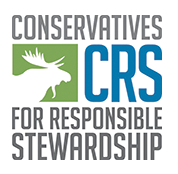A massive $1 trillion Farm Bill that that sets U.S. farm and food policy for the next five years was signed into law earlier this month. Unfortunately it falls far short of the reforms U.S. farm policy needs. The new law continues to dole out lavish taxpayer-funded subsidizes for crops like corn, wheat and soy that mostly benefit large profitable agribusinesses.
While the new law technically ends the ridiculously wasteful guaranteed payment program, which in some cases paid farmers not to farm, it largely replaces it with new agribusiness income entitlements, including something called “transition assistance” and increased spending on crop insurance.
The conservation title, while not perfect, is the law’s bright spot. It maintains a robust Conservation Reserve Program and provides a permanent funding baseline for the Wetlands Reserve and Grassland Reserve programs—which are now consolidated under the title Agricultural Conservation Easement Program (ACEP).
It also includes a so-called “sodsaver” provision to protect the nation’s remaining native grasslands in Montana, North Dakota, South Dakota, Minnesota, Iowa, and Nebraska. It discourages converting these native grasslands, which are critical for birds and other wildlife, to farmland by limiting crop insurance subsidies on land that has recently been converted.

